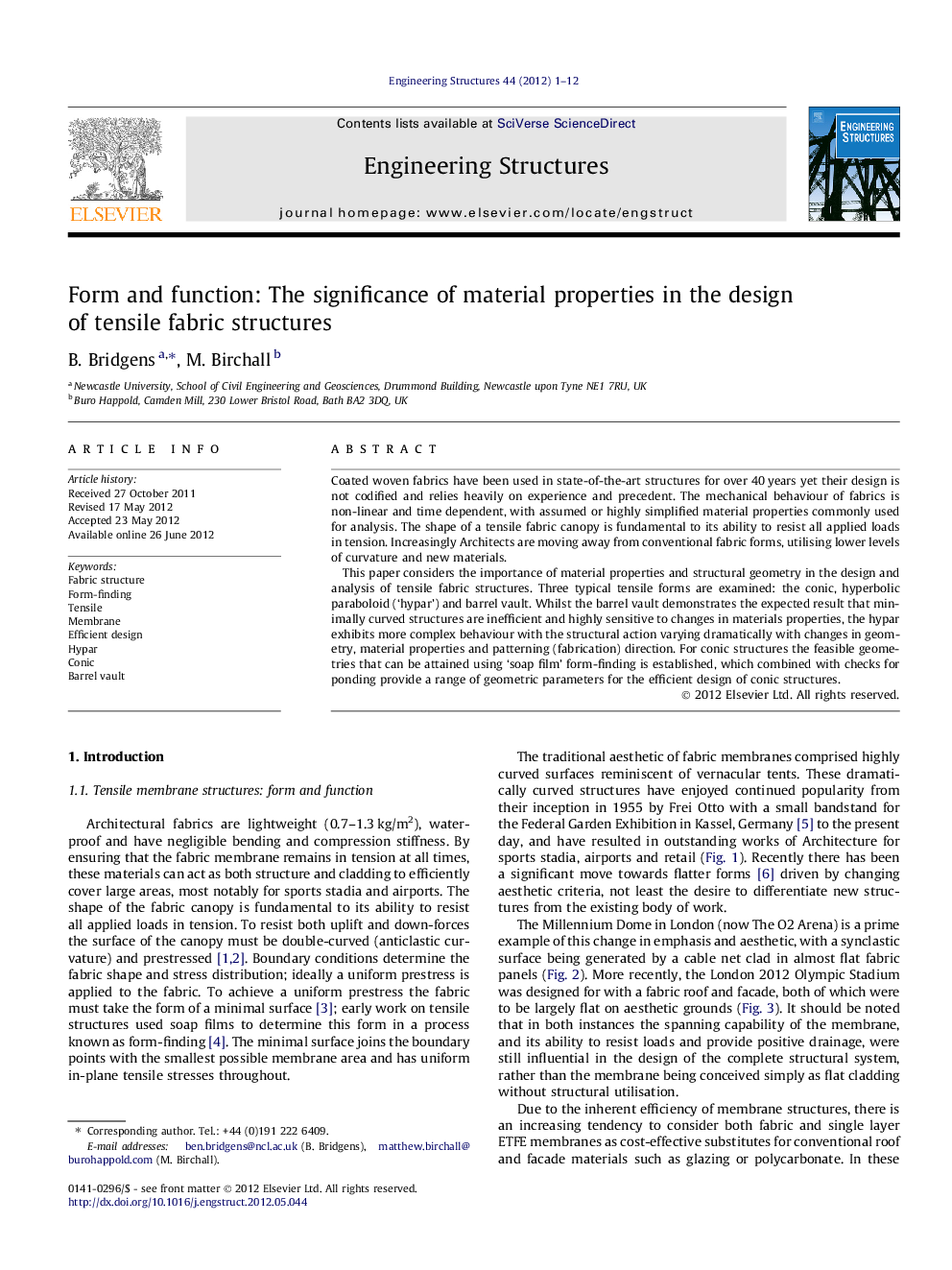| Article ID | Journal | Published Year | Pages | File Type |
|---|---|---|---|---|
| 267074 | Engineering Structures | 2012 | 12 Pages |
Coated woven fabrics have been used in state-of-the-art structures for over 40 years yet their design is not codified and relies heavily on experience and precedent. The mechanical behaviour of fabrics is non-linear and time dependent, with assumed or highly simplified material properties commonly used for analysis. The shape of a tensile fabric canopy is fundamental to its ability to resist all applied loads in tension. Increasingly Architects are moving away from conventional fabric forms, utilising lower levels of curvature and new materials.This paper considers the importance of material properties and structural geometry in the design and analysis of tensile fabric structures. Three typical tensile forms are examined: the conic, hyperbolic paraboloid (‘hypar’) and barrel vault. Whilst the barrel vault demonstrates the expected result that minimally curved structures are inefficient and highly sensitive to changes in materials properties, the hypar exhibits more complex behaviour with the structural action varying dramatically with changes in geometry, material properties and patterning (fabrication) direction. For conic structures the feasible geometries that can be attained using ‘soap film’ form-finding is established, which combined with checks for ponding provide a range of geometric parameters for the efficient design of conic structures.
► Minimally curved and flat tensile fabric structures are increasing in popularity. ► Minimal curvature increases sensitivity to poorly quantified material properties. ► Patterning direction is critical to structural performance due to low shear stiffness. ► Structural action can be profoundly different for a flat or minimally curved panel.
